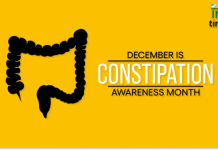
Lung Cancer Awareness Month, held every November, is dedicated to raising awareness about lung cancer, advancing prevention, early detection, and treatment, and providing hope and support to those affected by the disease. Lung cancer is one of the leading causes of cancer-related deaths globally, and the goal of this awareness month is to shed light on this often-overlooked disease, promote healthier choices, and work towards a future where lung cancer is preventable and treatable.
Why Lung Cancer Awareness Month Matters
Lung Cancer Awareness Month matters because lung cancer remains a significant health issue worldwide. In 2024, with advancements in screening, diagnosis, and treatment, we have more tools than ever to combat lung cancer. However, the disease’s high mortality rate calls for continued awareness, education, and support for patients and families. This awareness month provides an opportunity to educate the public about risk factors, symptoms, and the importance of regular check-ups.
Understanding Lung Cancer: Types and Risk Factors
1. Types of Lung Cancer
Lung cancer is primarily classified into two main types:
- Non-Small Cell Lung Cancer (NSCLC): The most common form, accounting for about 85% of lung cancer cases.
- Small Cell Lung Cancer (SCLC): Less common but more aggressive and faster-spreading.
2. Key Risk Factors
- Smoking: Smoking is the leading cause of lung cancer, contributing to approximately 85% of cases.
- Radon Exposure: Radon, a natural radioactive gas, is the second leading cause of lung cancer.
- Secondhand Smoke: Inhalation of smoke from others can also significantly increase the risk.
- Environmental Pollutants and Occupational Hazards: Exposure to asbestos, certain chemicals, and air pollution can increase lung cancer risks.
- Family History: Genetics also play a role, and a family history of lung cancer may increase susceptibility.
Early Symptoms of Lung Cancer to Watch For
Early detection of lung cancer significantly improves treatment outcomes. Here are some signs to look out for:
- Persistent cough that worsens over time
- Shortness of breath or wheezing
- Chest pain, especially during breathing or coughing
- Coughing up blood or rusty-colored sputum
- Unexplained weight loss or loss of appetite
- Fatigue and recurrent respiratory infections
The Importance of Screening and Early Detection
For those at high risk, especially smokers and former smokers, lung cancer screening is critical. Low-dose computed tomography (LDCT) scans have been shown to detect lung cancer at earlier, more treatable stages. The American Cancer Society and other organizations recommend screening for those with a history of heavy smoking, especially if they are between 50 and 80 years old.
Prevention Tips for Reducing Lung Cancer Risk
1. Avoid Smoking
Quitting smoking is the most effective way to reduce lung cancer risk. Resources such as counseling, medications, and support groups are available to help individuals quit successfully.
2. Avoid Secondhand Smoke
Limiting exposure to secondhand smoke in public places, workplaces, and homes can also reduce lung cancer risks.
3. Test for Radon
Testing your home for radon levels, especially in basements, and mitigating high levels can reduce exposure to this dangerous gas.
4. Wear Protective Gear
Those working with hazardous chemicals or materials should always use protective equipment to limit inhalation of harmful substances.
Recent Advances in Lung Cancer Treatment
In 2024, medical advancements continue to improve lung cancer treatment options, with a focus on targeted therapies and immunotherapies:
- Targeted Therapy: Focuses on attacking specific genetic mutations found in cancer cells.
- Immunotherapy: Boosts the body’s immune response to help it recognize and fight cancer cells more effectively.
- Surgery, Radiation, and Chemotherapy: Traditional methods remain effective, especially when combined with newer treatments for a holistic approach.
The Role of Lifestyle in Lung Health
Adopting a healthy lifestyle can significantly benefit lung health:
- Regular Exercise: Enhances lung capacity and overall respiratory health.
- Healthy Diet: A diet rich in fruits, vegetables, and whole grains can help reduce cancer risk.
- Avoiding Air Pollution: Minimizing time spent in polluted environments or using air purifiers can improve lung health.
How to Get Involved in Lung Cancer Awareness Month 2024
- Raise Awareness on Social Media: Use hashtags like #LungCancerAwarenessMonth2024 and #LungHealth to spread knowledge.
- Participate in Local Events: Many communities hold walks, runs, and other events to support lung cancer research and patients.
- Wear White or Pearls: White and pearls are the colors of lung cancer awareness. Wearing them can show support and spark conversations.
- Donate to Lung Cancer Research: Supporting organizations like the American Lung Association can fund research, patient support, and advocacy efforts.
Supporting Lung Cancer Patients and Families
Offering emotional support, attending doctor’s appointments, or simply lending a listening ear can make a world of difference to lung cancer patients and their families. Many organizations provide resources, support groups, and counseling services.
Conclusion
Lung Cancer Awareness Month 2024 is a time for us to come together to increase awareness, support those affected, and advocate for improved treatments and prevention strategies. By understanding the causes, risk factors, and advances in treatment, we can work towards a world where lung cancer is less feared and more manageable.
FAQs
1. How common is lung cancer among non-smokers?
While smoking is the leading cause, approximately 10-15% of lung cancer cases occur in non-smokers due to factors like genetics, radon exposure, and air pollution.
2. What is the best way to detect lung cancer early?
Low-dose computed tomography (LDCT) scans are highly effective for early detection, especially in high-risk individuals such as smokers.
3. Can lifestyle changes reduce the risk of lung cancer?
Yes, lifestyle changes like quitting smoking, eating a healthy diet, exercising, and reducing exposure to pollutants can significantly lower lung cancer risks.
4. What are the colors associated with lung cancer awareness?
White and pearls are the colors associated with lung cancer awareness.
5. How can I help a loved one diagnosed with lung cancer?
Offer emotional support, help with daily tasks, attend medical appointments if appropriate, and consider joining a support group.




































